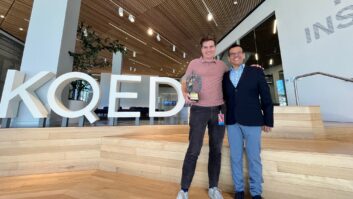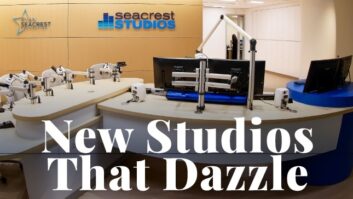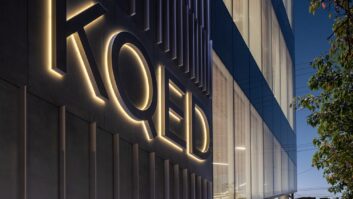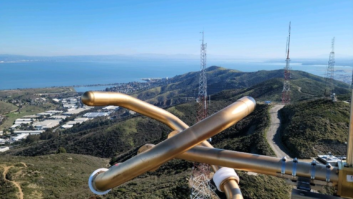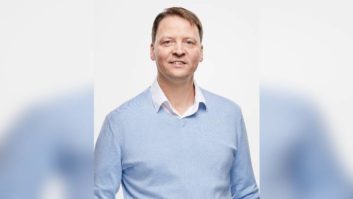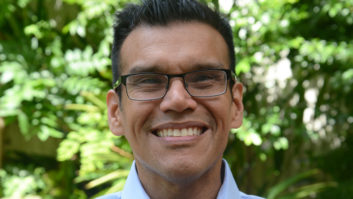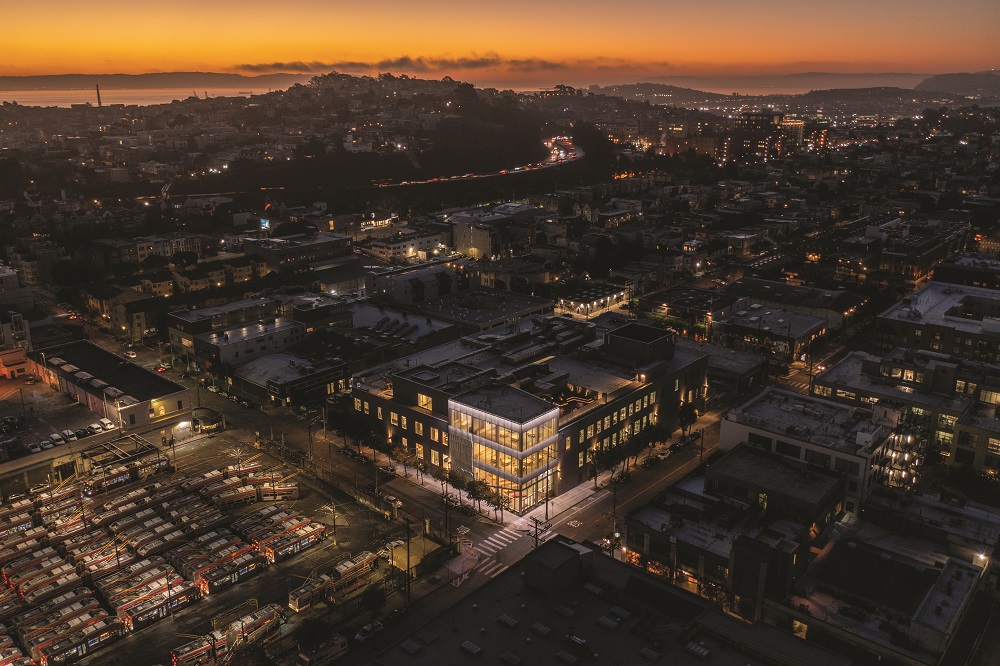
Located in the Mission District of San Francisco, public broadcaster KQED’s new facility is home to KQED FM 88.5 and TV channels KQED 9 and KQED Plus, along with streaming media, podcast production studios and a vibrant community live event space. The building recently underwent a $94 million gut-it-to-the-walls-and-start-from-scratch renovation.
KQED’s journey involved a lot of skill, planning, collaboration and patience. It also took a bit of luck and, in the end, the ability to create opportunities out of crisis.
Radio World spoke with KQED’s Dave Hansen, executive director, media operations and facilities; Donny Newenhouse, vice president, broadcast engineering and operations; and Peter Cavagnaro, director, marketing and communications about the long voyage from Mariposa Street to a temporary location in San Francisco’s financial district, and back home again.
Building renovations were funded by KQED’s Campaign 21, the station’s eight-year capital effort, which raised $140 million in total to fund critical infrastructure and technology improvements as well as innovation projects. Donations to Campaign 21 came from nearly 5,000 individuals.
The renovated building devotes a significant amount of space to community engagement, a trend becoming more common in public broadcasting.
The heart of the building is The Commons, a 3,850-square-foot, 150-seat multipurpose theater, which is the setting for KQED Live, a multiplatform live events program that supports both in-person and virtual participation. KQED Live events are designed to track with public media programming, providing another means for the audience to interact with the station. KQED Live produces around 80 events annually.
The PRX Podcast Garage at KQED is a community program in the facility that aims to bring a new generation of audio storytellers into the environment. PRX operates in designated multipurpose space, and has been the scene for podcast workshops by the Kitchen Sisters; NPR and podcast producers Davia Nelson and Nikki Silva; Snap Judgment’s Glynn Washington and several others. The program hopes to eventually make studio space and equipment available for aspiring podcasters and audio storytellers.
Temporary studios
KQED moved into its current Mariposa Street location in late 1991. What had been an industrial warehouse space was revamped to accommodate KQED’s corporate and technical operations.
After 20 years of station growth and changes in media, a rethink was long overdue.
“There had been incremental upgrades and renovations over the years, and yet more modifications when we went to HDTV in the 2000s,” said Dave Hansen.
“By then, it had reached the point where the basic configuration of the building was no longer meeting our needs. We had simply outgrown the space as it existed.”
That realization set in motion a planning process to consider the options.
The choices came down to selling the Mariposa Street building; purchasing a new space in an expensive and competitive Bay Area real estate market and starting over; or temporarily moving to another location while their old space was renovated, and then moving back.
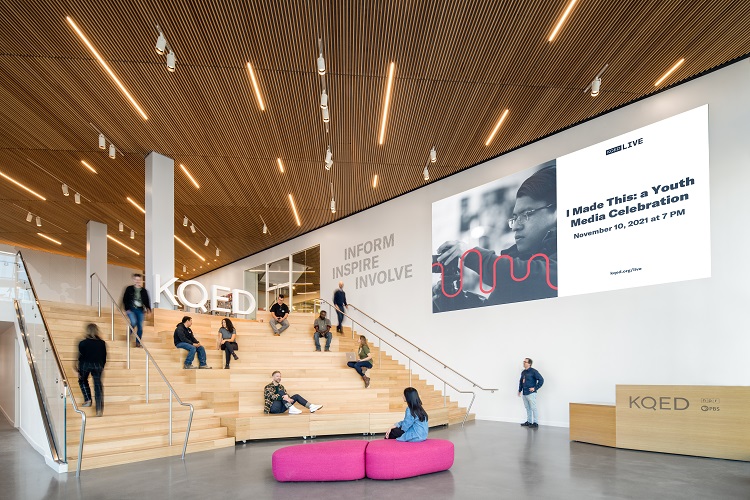
Hansen said the decision came down to financial responsibility. “Even though it involved complex logistics, temporary relocation and moving back was deemed to be the most financially responsible option.”
Their course now set, one of the first steps for KQED was finding a suitable rental space while the projected 2-1/2-year renovation was completed, no simple task in the San Francisco real estate market. Then luck intervened.
“Our real estate partners managed to connect us with Bechtel Engineering, who were in the midst of relocating their downtown Beale Street offices to Virginia,” said Hansen. “It turned out they were looking to sublet their space for the remaining three years left on the lease.
“The space was already built out and furnished for our corporate needs. We moved our TV productions to a local studio, Media One. Finding a furnished space downtown in this time frame for a reasonable lease is really what made it all work.”
Plans were soon underway. Tech teams were mobilized to build the temporary radio and TV studios, and to engineer new connections to the outside world.
Newenhouse and his team decided the best strategy was to upgrade studio gear when moving into the temporary location, making the return to Mariposa Street easier.
“At the same time,” Newenhouse said, “the old analog/AES Studer consoles were replaced with Lawo Crystals in the edit booths and Lawo Rubys in the four control rooms. Audio routing was upgraded from Lawo Nova 73 to PowerCore.”
The decision to upgrade at this point would pay huge dividends as later events unfolded.
Other key radio components included Dalet Galaxy media asset management; Telos on-air phone system; GatesAir Intraplex IP Links and codecs; Electro-Voice RE20 microphones; Forecast Consoles technical furniture; and acoustic design by Russ Berger Design Group.
Interoperability
Part of the strategy for the new facility included blurring the lines between radio and TV.
“In the past, the two sides were very siloed,” said Newenhouse.
“Our goal for the new facility was complete cross functionality. This means intake across radio and TV on the same control system, all sources from both sides available to all platforms and all crew trained to manage different disciplines.”
Newenhouse adds that the infrastructure is largely fiber-based, with most traffic moving away from AES to AoIP, and unified control systems with native Quartz. “There’s very little analog left in the facility,” he said.
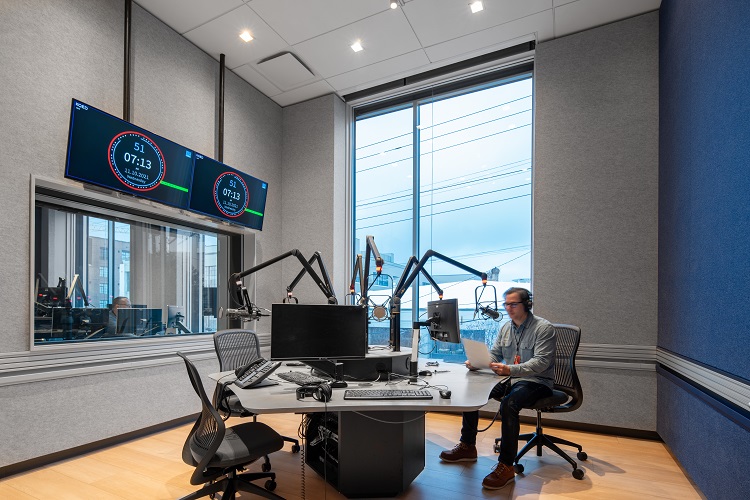
No large renovation project goes quite according to plan, but KQED’s staff faced unprecedented challenges shortly after the Mariposa Street building was gutted in the fall of 2019.
“That’s when the pandemic hit,” said Hansen. “The impact was unimaginable, everything just stopped. On a project of this magnitude, the initial two-week halt could be catastrophic. We had to get a letter from the mayor’s office declaring that our renovation was an essential project so that we could continue construction.”
But that wasn’t the only problem. “We were in the midst of this massive renovation project, and suddenly we all had to pivot and design new workflows that would enable people to work from home,” Newenhouse said.
“Comrex Access units were sent to most of our employees. We had to enable everyone to virtually access their workstations. Our op techs continued to work from the studios to build this workflow infrastructure from scratch.”
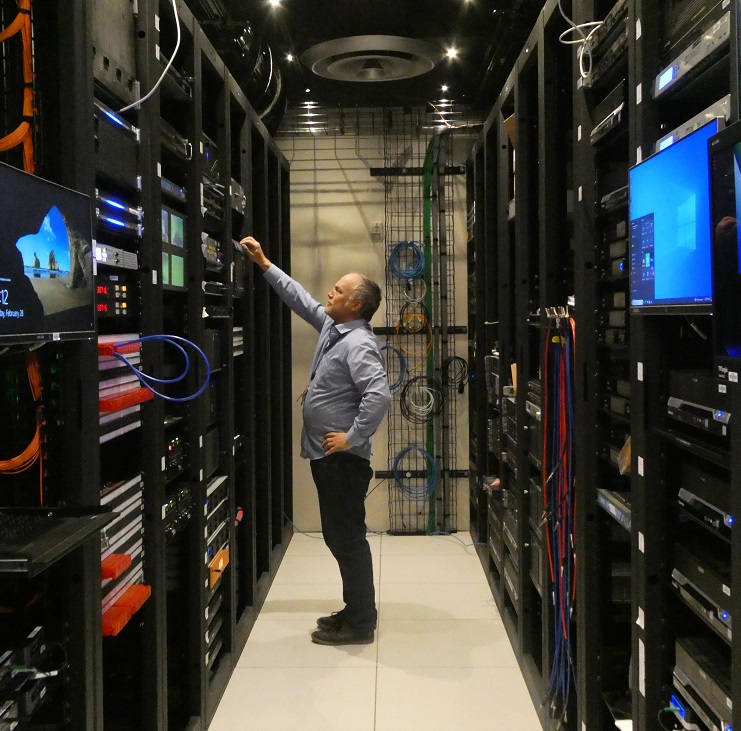
In the midst of this near-chaos, Hansen said something went in their favor. “We were able to reconfigure and leverage the new technology that was installed when we relocated to the temporary locations at Beale a year prior, that is what really made this transition possible. The way our tech was set up before the move out of Mariposa Street, it would simply not have been possible for people to work from home.”
Meanwhile, the FM part of the operation began a disaster-recovery project, leveraging its old equipment to build emergency studios at Sutro Tower. All types of access were included, and that part of the project was completed in the next two to four weeks.
A matter of debate
While Newenhouse and his team had tried to build as much redundancy and flexibility into the new facility as possible, it hadn’t been tested to full capacity during the first year of operation. That was about to change. On Oct. 23, 2022, KQED hosted the only California gubernatorial debate between Gov. Gavin Newsom and state Sen. Brian Dahle.
As Cavagnaro recalls, planning for this had to come together in a hurry. “Scott Shafer and Marisa Lagos from KQED’s Politics and Government team were in touch with the two candidates about setting up the debate. We didn’t get confirmation from Brian Dahle’s campaign that he would accept the invitation until maybe just short of three weeks before the scheduled debate on Oct. 23. So the preparations happened in quite a hurry. That was a challenge.”
The debate was hosted in The Commons, KQED’s multi-purpose event venue.
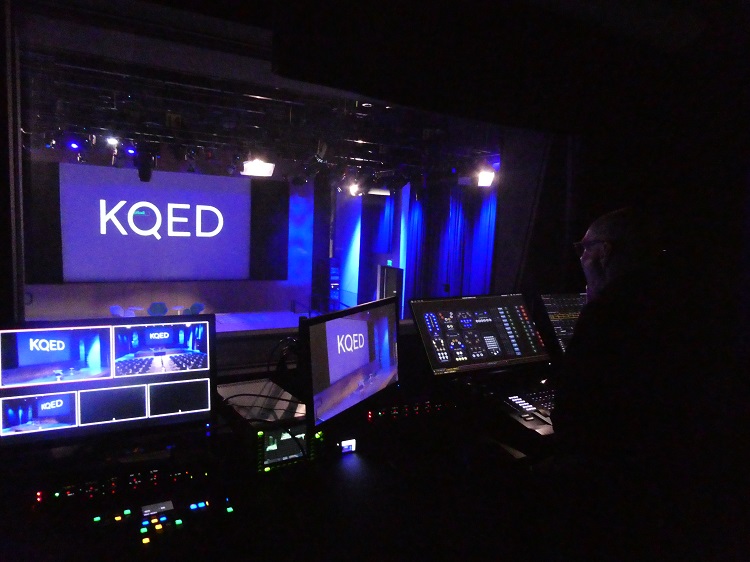
“This space is state-of-the-art and built for audio and visual recording. What made this debate a unique opportunity in using The Commons, was that this was the first time all of the systems we designed and installed in the space were used in order to broadcast live on radio and rebroadcast later that evening on television.”
Another big part of the broadcast was to make the feed available to other television stations for simulcast or to rebroadcast later. In contrast, production for the 2018 debate was only broadcast live on radio and shared with other radio stations. There was no television or video component.
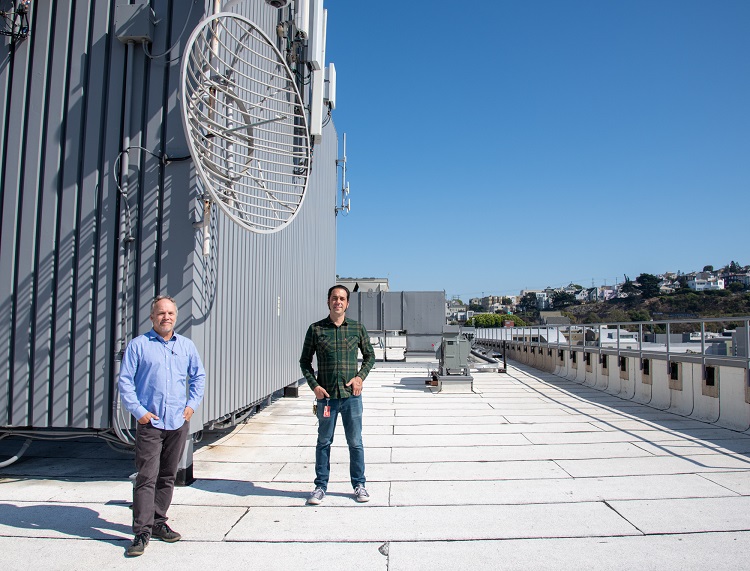
One of the major lessons learned from this, according to Cavagnaro, is that not all stations use the same technologies or platforms for receiving simulcast feeds, particularly between commercial and public media stations. To solve for this, KQED engaged with The Switch to host their television feed in the larger market California distribution hubs
The Switch also made the debate available via satellite uplink, which could be accessed by stations that did not subscribe to The Switch. Since KQED only broadcasts locally to the San Francisco area and this debate was of consequence to all Californians, the goal was to ensure that stations in every market across the state not only had awareness but could broadcast on their own channels and platforms if they chose to.
According to Cavagnaro, the broadcast went perfectly. “There were no issues, and everyone was really pleased with the quality of the setup, conversation and production. Distribution through The Switch and ContentDepot ran as planned. The debate was either simulcast or rebroadcast by several other stations across the state and also nationally via C-SPAN.”
Reflecting after the event, Cavagnaro found positives.
“As far as what worked, we were quite pleased with the production and how the space and its technology suited the production. Moreover, this was a massive cross-departmental collaboration with news, TV and radio operations, radio and TV programming, station relations, and marketing and communications all working together on a complex project against an intense deadline. A true team effort.”
See more photos of the facility in the digital edition of Radio World.





